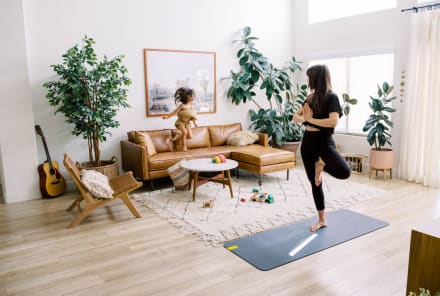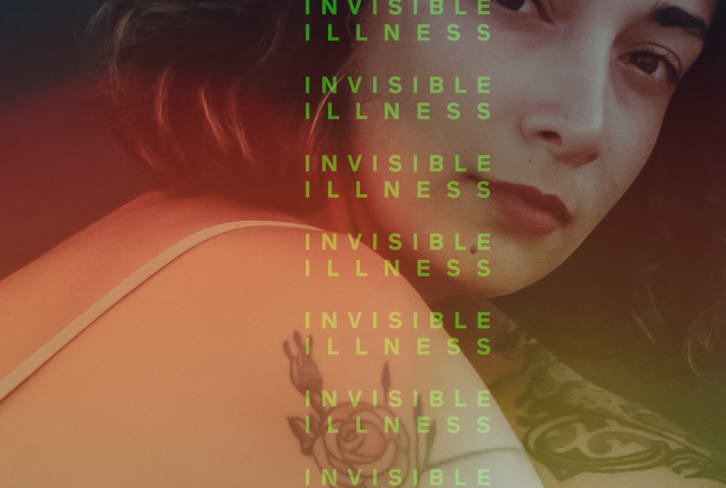Advertisement
How Long The Honeymoon Phase Lasts + 10 Ways To Bring It Back

Even in the best relationships, things can get “rusty.” You might get bored, start to take each other for granted, find yourself fighting often, or not communicate at all. But this doesn't have to mean you're going to live unhappily ever after. The honeymoon phase of a relationship fades away with time for most couples, but it's very possible to bring those feelings back with a little intention.
What is the "honeymoon phase"?
The honeymoon phase1 is an early stage of a relationship where the couple feels very attached, passionate, and happy with the relationship. It's associated with those feelings of butterflies in the stomach, thinking about the other person constantly, wanting to be around each other all the time, and lots of physical or sexual attraction. The relationship is filled with a lot of excitement, energy, and romance.
How long the honeymoon phase lasts.
The honeymoon phase can last anywhere from two months to two years. The length of time a couple spends in this phase varies significantly2 depending on the way the relationship starts, what's going on in the couple's lives, the partners' personality traits, how long it takes to fall in love, and other factors.
While the phase might come to an end, the honeymoon feelings can be accessed time and time again forever. Once you recognize that things have gotten stale, you can put in the “work” (it’s fun, I promise!) to revive the love that brought you together in the first place.
How to bring back the honeymoon phase.
Here are a few ways to get back that "honeymoon phase" feeling in your relationship, no matter how long you've been together.
Deposit good feelings in each other's emotional banks, every day.
You know those things you say or do that make you feel good, like complimenting a stranger on their haircut or buying a cup of coffee for the person behind you in line? You’re doing good for someone else, but it makes you feel good too. Practice those little kindnesses on your partner every day! Surprise them with their favorite latte or compliment their appearance before they leave for work. They feel good, and you feel good—it’s a win-win.
Refamiliarize yourselves with your shared vision for your relationship and future.
Date nights are important—most of us know that—but what if you planned one specifically to share (or revisit) your individual visions for your relationship and your shared vision together? Share how you envision your relationship growing, evolving, expanding—and how you hope to continue to grow together.
Schedule some space.
Just as important as scheduling time to spend together is scheduling time to spend apart. Not only will this allow you to reflect and imagine and enjoy your own company; it’ll also give you the opportunity to miss your partner and remember what you love so much about being with them (that you might otherwise take for granted).
Write love letters.
Don’t you just love getting snail mail? Your partner likely does too. Get old-fashioned and start writing love letters to your partner. You can write a note on the bathroom mirror every day, or write one once a week that you actually pop in the mail—even if you live together. (Here's our full guide on how to write a love letter.)
Create a partner-focused gratitude practice.
Most of us are aware of the benefits of gratitude. It makes us happier, more energetic, and more forgiving, among many other things. So what if you created a practice solely around the gratitude you feel for your partner? What do you appreciate, admire, love, and cherish about them? Just thinking about this every day will be valuable, but feel free to share at least one thing with them, too.
Plan a recommitment ceremony or party.
This can be as big or as small as you’d like for it to be. The point is that you both focus on the commitment you made to each other—whether it was days, months, or years before now—and recommit to each other, knowing what you know now about yourself, about your partner, and about your relationship to one another. Share your thoughts on this with each other, and celebrate this recommitment in whatever way feels right to the both of you.
Have more sex.
Sure, you’ve probably heard this tip a time or two—but that’s because it’s important. And just because you’re hearing it doesn’t mean you’re doing it. There’s no “right” or “wrong” amount of sex couples should be having, but there’s no avoiding the fact that having it—any of it—will reenergize your relationship. So just do it. Tonight. You (and your partner) will thank me later.
(Here's a few ways to deepen your sexual connection as a couple. Also, read this if your partner isn't interested in sex lately.)
Listen actively.
Ask questions of your partner that spark true, deep discussion. Your question can be as simple as “How was your day?” but set the intention that you will only listen—don’t jump in with comments, questions, or advice. Shut down all distractions—including those that you often provide—and plan to truly listen to what they have to say. (Here's some more conversation starters for couples.)
Plan a "team" activity.
Make weekly plans to do something together—just the two of you. Date nights are great, but it doesn’t need to be extravagant. It might be as simple as cooking tonight’s meal together. Whatever you choose to do, tackle it as a team—leaning on and supporting one another through it, much as you need to do in your relationship.
Ask your partner what they want.
I could give you 10 more tips for refreshing your relationship, but there will always be one person who knows even better than I do what will be most effective—and that's the person you're with. Ask your partner what they want. What do they want to do? Experience? Feel? And ask yourself those same questions too! Then go do those things.
The takeaway.
The “rut” is a natural part of any relationship’s evolution, but it doesn't have to stay there. Get creative and try out a few (or all) of the tips above to start seeing your partner and your relationship in a whole new way. It’ll be like falling in love all over again.
Watch Next
Enjoy some of our favorite clips from classes
Enjoy some of our favorite clips from classes
What Is Meditation?
Mindfulness/Spirituality | Light Watkins
Box Breathing
Mindfulness/Spirituality | Gwen Dittmar
What Breathwork Can Address
Mindfulness/Spirituality | Gwen Dittmar
The 8 Limbs of Yoga - What is Asana?
Yoga | Caley Alyssa
Two Standing Postures to Open Up Tight Hips
Yoga | Caley Alyssa
How Plants Can Optimize Athletic Performance
Nutrition | Rich Roll
What to Eat Before a Workout
Nutrition | Rich Roll
How Ayurveda Helps Us Navigate Modern Life
Nutrition | Sahara Rose
Messages About Love & Relationships
Love & Relationships | Esther Perel
Love Languages
Love & Relationships | Esther Perel











